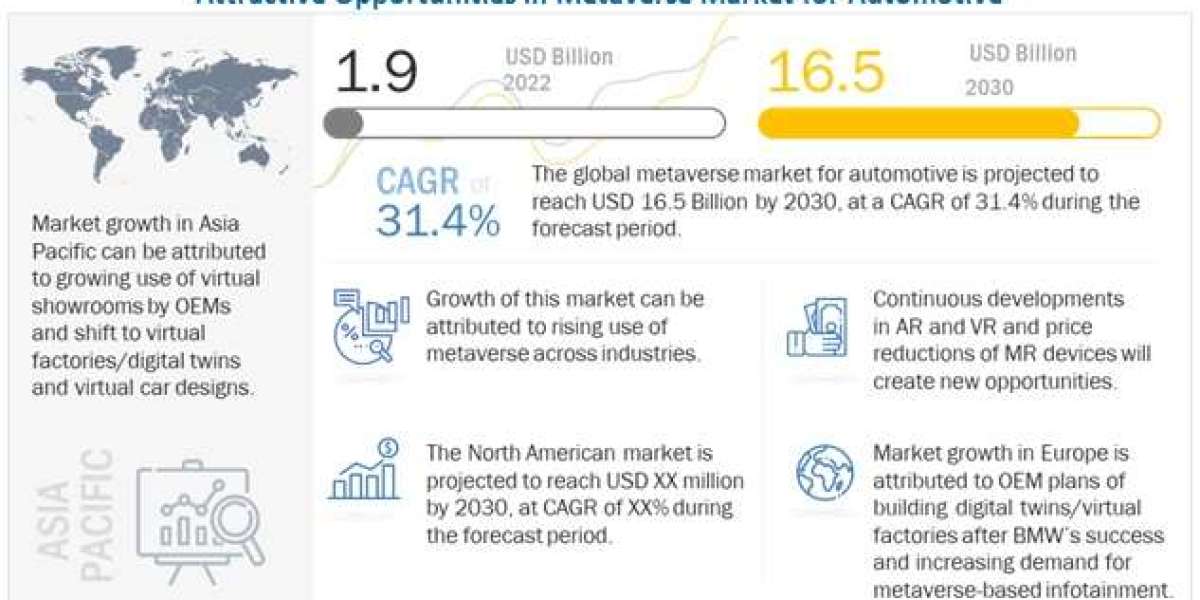The global automotive metaverse market was valued at USD 1.9 billion in 2022 and is projected to grow to USD 6.5 billion by 2030, with a compound annual growth rate (CAGR) of 31.4% during the forecast period of 2022-2030. As the metaverse continues to expand, companies are adopting strategic initiatives to attract more customers. The quality, affordability, and accessibility of VR hardware, such as headsets, controllers, and tracking systems, have greatly improved, making virtual reality appealing to a wider audience. VR is being used in diverse industries for training and education, from medical simulations to flight and job training, creating a safe, realistic learning environment. These factors are driving the growth of the metaverse market.
Extended Reality Software segment holds the largest market size during the forecast period.
Various extended reality software includes AR and VR web app development tools, AR and VR mobile app development tools, AR and VR studios, Software Development Kits (SDK), and cloud-based tools. The extended reality software market has witnessed high growth and will significantly increase during the next five years. Mass consumerization would help achieve widespread adoption of extended reality software globally. XR is a spectrum of immersive technologies, including VR, AR, and mixed reality (MR). These technologies can be crucial in developing and using the metaverse, enhancing the overall user experience, and enabling various applications:
Immersive Environments: XR can provide a more immersive and realistic experience within the metaverse. Users can interact with digital environments and objects as if physically present, enhancing their sense of presence and engagement.
Avatar Customization: XR can create highly detailed and lifelike avatars. Users can design avatars that closely resemble themselves or take on entirely different personas, allowing for more personalized and expressive interactions in the metaverse.
Virtual Meetings and Collaboration: XR can enable virtual meetings and collaborative workspaces in the metaverse. Users can meet as avatars in virtual conference rooms or collaborate on projects in shared virtual environments, making remote work and collaboration more engaging and efficient.
Industrial Manufacturing vertical to record the highest CAGR during the forecast period.
Metaverse technologies, such as AR, VR, and MR, have a wide range of use cases in industrial manufacturing. The technologies support the industry’s installation, assembly, maintenance, and remote assistance. This technology is used in enterprises to train personnel, provide information about industrial facilities, redesign products, and simulate industrial scenarios. It has given improved visibility to trainers. It is an innovative technology that is compatible with Industry 4.0. The use of AR technology minimizes human errors, improves efficiency, and reduces the expenses of enterprises. For instance, AR/VR training courses developed by Novac Technology Solutions can provide a secure training environment for manufacturing companies to educate their workforce on diverse topics such as machine designs, product designs, plant layouts, safety protocols, and other related concepts. There have been several applications of AR displays in the enterprise space. For instance, Boeing, a leading manufacturer of commercial jetliners, uses AR technology to ease the complex wiring tasks used in every new 787-8 Freighter. This technology overlays text related to the internal schematics of planes on AR displays during their repair and maintenance. It also helps enhance the productivity of workers and ensures error-free operations.
Our analysis shows North America holds the largest market size during the forecast period.
As per our estimations, North America will hold the most significant market size in the global metaverse market in 2023, and this trend will continue. There are several reasons for this, including numerous businesses with advanced IT infrastructure and abundant technical skills. Due to these factors, North America has the highest adoption rate of the metaverse. Vendors operating in the metaverse ecosystem in North America are Apple, Google, Microsoft, and Meta. Apple is one of the leading players focusing on using AR technology in its hardware, such as 3D cameras and displays. Such regional players are a crucial factor driving North America’s market growth. The high usage of social media apps like Snapchat, Facebook, and Instagram will fuel the demand for advanced technologies from consumer applications. Companies are making significant developments in the XR market in the region. The presence of many cloud service providers in America will enable metaverse companies to host virtual worlds and experiences and store a large amount of data. The growth of edge infrastructure in America will empower applications such as AR, VR, and gaming, requiring real-time responses.
Driver: Brand promotions for automotive OEMs using gamification
Many companies in the automobile industry are taking advantage of the gaming part of the metaverse to increase brand awareness. They are strategically using metaverse for engaging in metaverse-based promotions and sponsorships. These companies capitalize by gamifying their brands through immersive online experiences and virtual world simulators. Some metaverse projects that gamify brand awareness include Mobility Adventure by Hyundai Motor Company and Roblox and Moving Platform by Volkswagen AG and Microsoft, among others. People engage in these 3D worlds to play mini-games, connect with other gamers, socialize, make friends, and get product information through salespeople, chatbots, or virtual AI agents. Metaverse makes brand promotion interesting and engaging for young customers.
The metaverse vendors are witnessing new revenue prospects from the opportunities in segments such as VR, AR, XR, cloud gaming, AI in social media, e-sports, virtual fitting rooms, and AR/VR hardware and peripherals. The following table includes metaverse market for automotive sizes and CAGRs of such adjacent markets.
Restraint: Installation and maintenance cost of high-end components
Metaverse hardware includes devices for extended reality (AR, VR, and MR), along with semiconductor components, sensors, trackers, and other state-of-the-art equipment. These devices used in metaverse also use 3D and other advanced technologies to create a realistic-looking virtual environment, which increases their costs. The enterprise-grade metaverse software such as engines, 3D modelling software, and rendering tools are expensive. In addition to that, the installation of XR devices and solutions requires additional costs. Their maintenance costs further increase the overall investments required to adopt this technology. Therefore, such high installation and maintenance costs are expected to hinder the growth of the metaverse market globally. According to a report by NFT Studios, the cost of a project on metaverse can cost around USD 10,000 to USD 300,000, with around USD 1-4 million cost for a team of developers. Bigger projects, like Facebook’s metaverse, cost the company around USD 2.7 billion in just the first 3 months since its launch for upkeep and maintenance.
Opportunity: Incorporation of metaverse in automotive infotainment
AR, VR, and MR are expected to find applications in the automotive infotainment space in the coming years. OEMs have already started developing or partnering with other companies to provide AR/VR-based infotainment using metaverse. For instance, in CES 2019, Nissan announced the development of its invisible-to-visible (i2V) technology that can connect the driver and the passengers to the metaverse. People can appear as 3D AR avatars inside the cars. It also tracks the vehicle's immediate surroundings and anticipates what lies ahead. Similarly, In March 2022, Audi collaborated with start-up Holoride. The collaboration will bring VR in-car entertainment to Audi cars. The passengers in the back seat of the Audi car can use VR glasses and can have an immersive VR experience of games, videos, and other interactive entertainment content. The Holoride technology also synchronizes the real-time driving motions of the car.
Market Players
The prominent players across all service types profiled in the metaverse market’s study include Microsoft (US), Sony (Japan), Meta (US), HTC (Taiwan), Google (US), Apple (US), Qualcomm (US), Samsung (South Korea), Activision Blizzard (US), NetEase (China), Electronic Arts (US), Take-Two (US), Tencent (China), Nexon (Japan), Epic Games (US), Unity (US), Valve (US), Accenture (Ireland), Adobe (US), HPE (US), Deloitte (UK), Tech Mahindra (India), Ansys (US), Autodesk (US), Intel (US), ByteDance (China), NVIDIA (US), Epson (Japan), Panasonic (Japan), EON Reality (US), Roblox (US), Lenovo (China), Razer (US), Nextech AR Solutions (Canada), ZQGame (China), Talecraft (US), VR Chat (US), Decentraland (US), Sandbox VR (US), and Quidient (US).
Content Source:
https://www.marketsandmarkets.com/PressReleases/automotive-metaverse.asp








